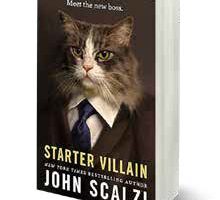Planning a trip to the Big Apple? Forget the guide books; instead, see the sights, learn the history, and soak up the ambience of Manhattan through the eyes of its journalistic native son Pete Hamill.I’m not a city person myself, but Hamill’s “Downtown” made me want to pack my bags and see the place he has studied and loved for decades. His account of a lifetime spent in the land of “Oz,” as his Irish immigrant mother called it, is presented in a thoughtful, intelligent, fast-paced and enjoyable manner.Born in Brooklyn in 1935, Hamill is the eldest of seven children. He abandoned parochial school at age 16 for a job as a sheet metal worker in the Brooklyn Navy Yard for a few years. Then he joined the Navy, where he completed his high school education and took advantage of the GI Bill to attend Mexico City College, studying painting and writing.In 1960, he procured the first of many newspaper gigs covering the crime beat for the New York Post. Later, Hamill’s vivid eyewitness accounts of wars in Vietnam, Nicaragua, Lebanon and Northern Ireland appeared in many newspapers and magazines. But his mind, heart and spirit always viewed the world through downtown. So, it’s no surprise he returned home, eventually landing jobs as editor-in-chief of the Post and the New York Daily News.He begins the book by calling Manhattan “The Capital of Nostalgia,” but this is not a sad tale about how great the city used to be. Instead, it is an account of an evolving, vibrant city built on the gift of tolerance that its first immigrants – the Dutch – bestowed on future generations.Few other cities in the world have been flooded with so many different cultures. English immigrants replaced the Dutch shortly before the Revolutionary War. Waves of Irish immigrants flocked to the city to escape the Great Potato Famine of the 1840s. They were followed by Germans, Italians, Jews and Poles; all seeking the same thing – the American Dream.Hamill reports, “All around downtown, the new immigrants can be seen today literally from morning to night. They are working on the reconstruction of old buildings. They are delivering Chinese or Thai or Italian food through snowstorms. They are preparing sandwiches in Korean delicatessens. They are cooking in restaurants. They are taking their young American children to their American schools.”Hamill urges all visitors and newcomers to Manhattan to get out of their cars and see his city the way immigrants once did, “On foot.” He makes the walk easy for tourists and readers alike by providing a map in the front of the book highlighting 18 of Manhattan’s most famous locations. Refer to it as Hamill guides you from Battery Park, up Broadway to Midtown. Along the way, he pauses to report the stories of long dead New Yorkers whose actions shaped the city.”A small triangular park called the Bowling Green” is the last remains of the Dutch settlement, Hamill said. Originally, the Green was a trading post, where Lenape Indians exchanged goods with the Dutch. It was probably even the scene of the most lopsided deal in history – a few strings of glass beads in exchange for Manhattan. Now Hamill calls it “a tranquil secret garden” in the midst of a concrete jungle.Next, he moves on to Trinity Church, which contains a monument to Alexander Hamilton who founded the New York Post with some political allies. The grave of William Bradford, creator of New York’s first newspaper, the New York Gazette, is also there. Hamill points out that 14 newspapers provided news and gossip to the people of New York before the advent of television news. Times Square itself only became “the city’s central plaza” after a German-Jewish immigrant bought the New York Times for $75,000 in 1896. He changed its name from Longacre Square and insisted city officials should extend the subway system to allow “freight trains” to deliver paper and ink to the Times.But Hamill doesn’t only cover the history of newspapers. Readers learn how the Bowery, Park Row and all the city’s famous neighborhoods and squares changed over time. He comments on architectural features that millions of people walk by each day, taking little notice of the beauty that surrounds them. He goes inside old department stores where massive murals decorate the walls. He explains the role that theater, art, music and dance played in the city’s development.Hamill also covers Manhattan’s darker elements. Crime, prostitution, drug and alcohol abuse have always plagued a segment of the population, he said. Fortunately, Manhattan’s murder rate has been dropping, and drug treatment programs and education are reducing the spread of AIDS.By combining every aspect of life in “Downtown,” Hamill tells the story of vast waves of immigrants who left their mark on the island. They came with their own brands of food, music and culture. Along the way, Hamill said, “They picked up toughness unique to Manhattan.” The stuff that makes immigrants believe the long journey from their homeland was worth it, because those hardships resulted in a better life for their children.Hamill said this “toughness” is what got New Yorkers through the events of 9-11. “New Yorkers didn’t run,” he writes. His description of how inhabitants responded to that fateful day may make readers weep, but it also shows the resilient spirit of its citizens.Read “Downtown;” it’s sure to make you put Manhattan on your list of must-see places.Note: Next month, I’ll review “The Lost Continent,” by Bill Bryson. Read the book, then read my review. Send your comments to KathyH@newfalconherald.com.






